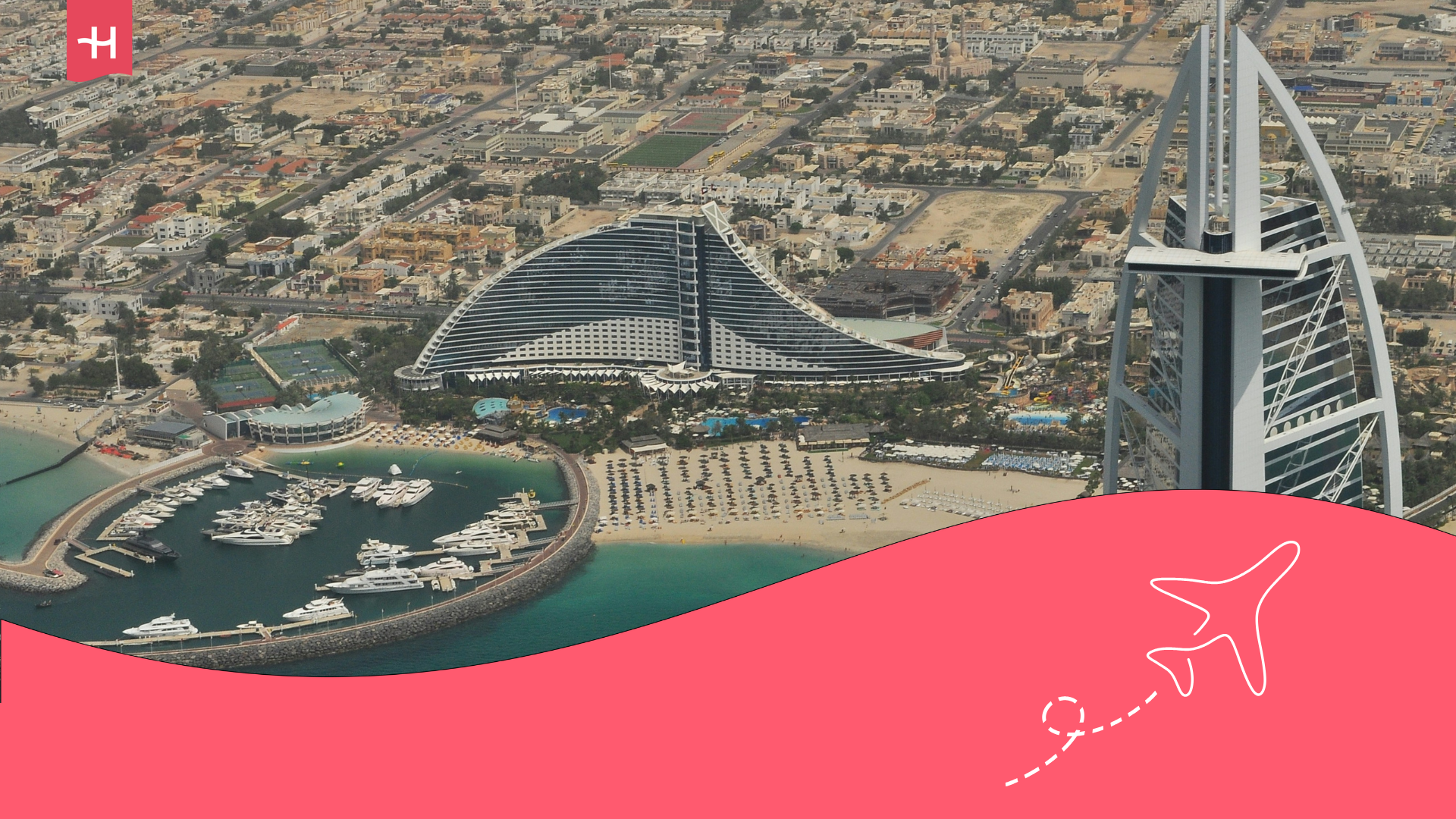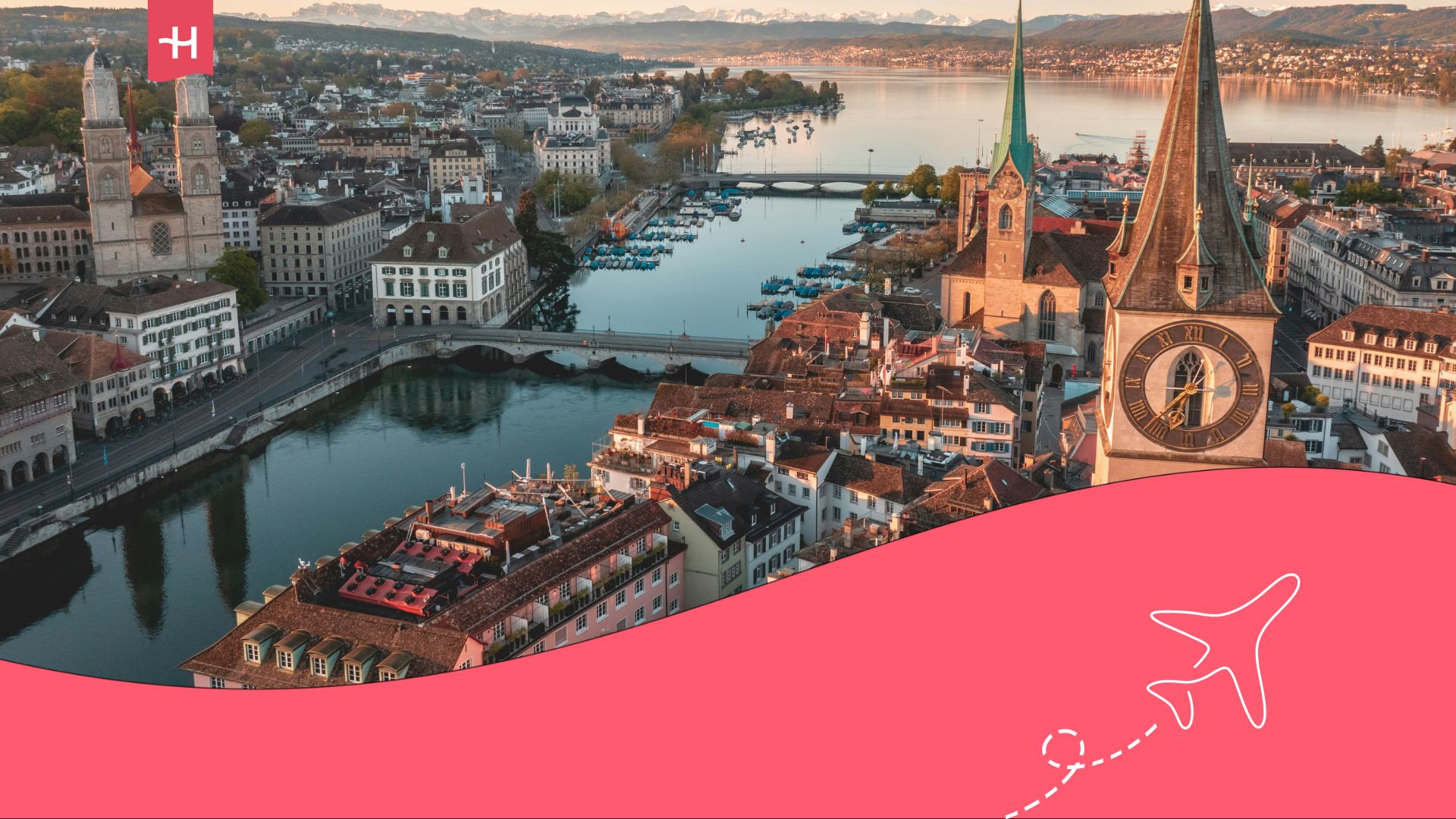Best neighborhood to stay in Rome as a digital nomad
Discover the best neighborhoods to stay in Rome — safe, well-connected areas with the perfect vibe for students, nomads, and expats.
Living in Rome is an experience that combines history, culture, and a vibrant lifestyle attracting thousands of foreigners every year. The Italian capital not only captivates with its monuments and cuisine but also offers diverse neighborhoods — from peaceful residential areas to lively districts full of nightlife and culture. Discover the best neighborhoods to stay in Rome for students, nomads, and expats.
In this article, we’ll show you the best neighbourhoods in Rome so you can find the ideal place according to your lifestyle, whether you’re looking for proximity to universities, a family-friendly environment, modern areas with coworking spaces, or corners with local flavour. Keep reading and discover where your next home in the Eternal City might be.
The 7 Best Neighbourhoods to Live in Rome
Rome is a city that can be enjoyed in a thousand different ways. Its neighbourhoods not only tell stories with every street and square, but they also define what your daily life will be like: Whether you’ll be surrounded by parks, restaurants, students, or Roman families who still preserve the local essence. Here, we share the best neighbourhoods in Rome to live in, with their advantages and particularities, so you can find the one that best fits your lifestyle.
1. Prati
Living in Prati is synonymous with order and comfort. Its wide, well-planned streets offer a sense of safety and tranquillity that is rare so close to the historic centre. Here, you’ll enjoy a balanced population density, with access to healthcare, renowned schools, and all kinds of shops, making everyday life easier. Additionally, the area has good digital connectivity and is served by stations on the A-line metro, ensuring easy movement around the city.
Another strong point of Prati is its proximity to green spaces such as the Vatican Gardens and its balance between residential life and an urban environment. Although housing prices are high, the quality of services and low light and noise pollution make it one of the best neighbourhoods in Rome if you’re looking for a high quality of life in an elegant and secure setting.
2. Trastevere
Trastevere combines the charm of a historic neighbourhood with the vibrancy of a space full of culture and social life. Its cobbled streets, lively squares, and proximity to universities and hospitals make it appealing to both students and families. Public transport, including trams and buses, makes it easy to reach the rest of the city, and the social cohesion felt in its streets gives it a welcoming, community-oriented character.
Although it can be noisier than other areas, the cultural and leisure offerings are unmatched: From traditional restaurants to theatres and alternative bars. Plus, the proximity to the Tiber River offers fresh air and spaces for walking. While the cost of living is moderate to high, the cultural richness, infrastructure, and cosmopolitan atmosphere keep it among the best neighbourhoods in Rome if you want to experience the city intensely.
3. Monti
In the heart of the city, Monti is a neighbourhood that breathes history and creativity. Its location between the Colosseum and the Roman Forum makes it a privileged area in terms of proximity to shops, cultural centres, and public transport. Although it’s a small neighbourhood, its population density is well balanced and it has basic services, schools, and nearby hospitals, which adds comfort to its residents.
It also stands out for its alternative atmosphere and its leisure offerings. Here, you’ll find artisanal cafes, design boutiques, and art galleries that create a vibrant neighbourhood life. Despite the noise on some streets, the balance between history, connectivity, and cultural diversity is what makes it a unique place to live.
4. Testaccio
Testaccio is a neighbourhood with a Roman soul that has managed to modernise without losing its roots. Its urban planning offers quiet streets, well connected by metro and train, with accessible healthcare and education services. It also features fresh food markets, local shops, and a safe environment, which makes for a practical and comfortable daily life.
The neighbourhood also shines for its social cohesion: here, there is a strong sense of community. Culturally, Testaccio offers museums, artistic spaces, and cuisine that is recognised throughout the city. The cost of living is moderate compared to other central areas.
5. Monteverde
If you’re looking for tranquillity and nature, Monteverde is one of the best choices. Its streets extend around Villa Doria Pamphilj park, offering fresh air, green spaces, and leisure areas for families, athletes, and outdoor lovers. The area is well connected to the centre by tram and bus, and it has quality schools, hospitals, and basic services.
Monteverde also stands out for its low light and noise pollution, which results in a calmer and more residential atmosphere. Although the cost of living can vary depending on the area, its social cohesion and infrastructure make it one of the best neighbourhoods in Rome if you value a family-friendly and healthy environment.
6. Parioli
Parioli is considered a prestigious neighbourhood in Rome. Its wide range of international schools, private hospitals, and high-end services make it a highly sought-after area for families and professionals. Additionally, it is surrounded by green spaces such as Villa Borghese, ensuring fresh air and spaces to practise sports or simply take a walk.
The neighbourhood’s infrastructure, with wide streets, quality shops, and good transport links, ensures a comfortable and safe lifestyle. Although the cost of living is high, the low population density, peaceful atmosphere, and safety make Parioli one of the best neighbourhoods in Rome if you prioritise well-being, urban planning, and quality services.
7. Ostiense
With an industrial past and a cultural present, Ostiense is now one of the most dynamic areas in the city. Its connectivity (metro, train, and buses), nearby healthcare services, and availability of university courses make it a great place to live. The neighbourhood has good digital infrastructure and is full of coworking spaces, making it a magnet for young professionals and creatives.
In terms of quality of life, Ostiense offers a wide variety of restaurants, markets, and cultural spaces, such as Eataly and its street art murals.
The Best Neighbourhoods for Digital Nomads in Rome
Rome is huge and diverse, and while the most famous neighbourhoods are always on the radar, there are other areas that digital nomads are discovering because they combine good connectivity, coworking spaces, well-designed colivings, and active international professional communities. The Italian capital offers neighbourhoods that combine connectivity, an inspiring atmosphere, and a good quality of life. These are the most recommended:
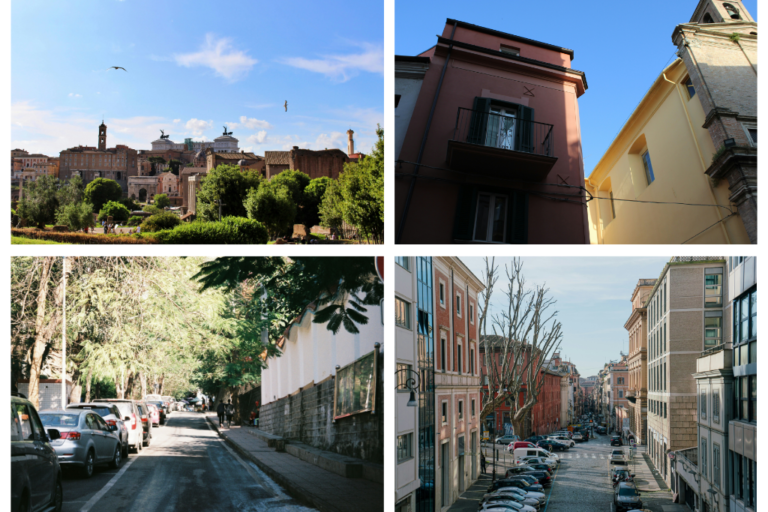
Pigneto
Known as the “Brooklyn of Rome,” Pigneto has gone from being an alternative neighbourhood to becoming one of the favourite meeting points for creatives and freelancers. Here, urban art, charming bars, and small coworking spaces blend with a multicultural atmosphere.
- Lower rental prices compared to central areas.
- Vibrant nightlife, ideal for socialising after work.
- Growing community of artists and digital nomads.
Tiburtina
With one of the city’s main train stations, Tiburtina is key if you travel frequently or want good connectivity. It’s a practical, less touristy neighbourhood, with more reasonable prices for long stays.
- Excellent transport (train, metro, and buses).
- Modern coworking spaces near the station.
- Functional atmosphere, ideal for prioritising mobility.
Flaminio
North of the centre, Flaminio is known for its cultural spaces like MAXXI and the Auditorium Parco della Musica. While it isn’t as bohemian as Pigneto or as affordable as San Lorenzo, it offers a balance between tranquillity, culture, and leisure options.
- Well connected by tram and metro line A.
- Modern environments with cafes and quiet spaces for remote work.
- Ideal if you’re looking for cultural inspiration close to home.
Nomentano – Piazza Bologna
The Piazza Bologna area in the Nomentano district is one of the most practical and attractive spots for digital nomads in Rome. With its youthful and dynamic atmosphere, it is full of cafes to work for a few hours, small coworking spaces, and shared accommodation options that make long-term stays easier.
- International community with a mix of students and professionals.
- Quick connections thanks to metro line B and several bus routes.
- Balanced cost of living, making it a very convenient alternative to more central and touristy areas.
As a digital nomad, your best tool for work is a good internet connection. While in Rome, you’ll find coworking spaces and cafes with WiFi, relying solely on these options can be risky.
The most practical solution is to have a Holafly eSIM for Rome, which gives you unlimited and stable internet as soon as you land. This way, you can work from your accommodation, a park, or a train without worrying about interruptions.
Important: If you are a frequent traveler and want to stay connected without worrying about expensive roaming or looking for a new SIM at every destination, Holafly’s subscription plans are for you. With a single eSIM, enjoy internet in more than 160 countries for a fixed price and no surprises on your bill. Travel without limits and connect easily and securely! 🚀🌍

Rome is a university city par excellence. It is home to institutions like La Sapienza, LUISS, and Roma Tre University, creating neighbourhoods that are highly oriented towards student life. Choosing the right place to live is key to enjoying the experience: Proximity to university, affordable rental prices, accessible services, and an active social environment. Here are the most recommended neighbourhoods for international students:
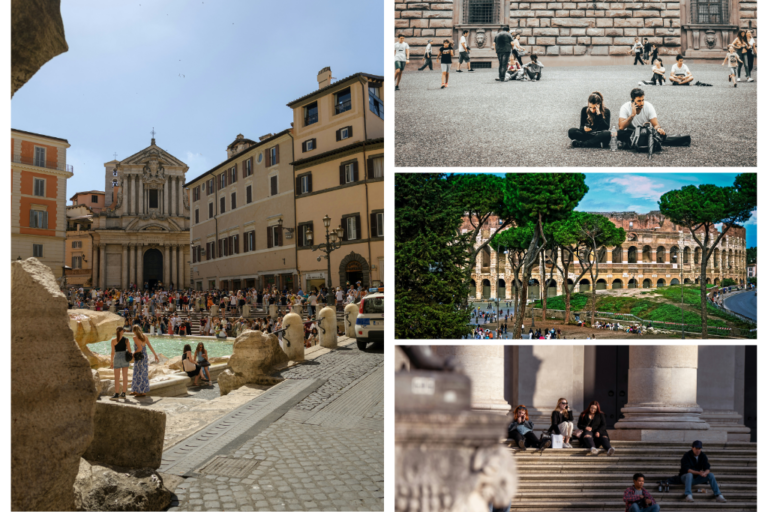
San Lorenzo
San Lorenzo is probably the most famous student neighbourhood in Rome. Located right next to La Sapienza University, it concentrates much of the university life. Here, you’ll find affordable bars, accessible restaurants, and student residences, making it a multicultural meeting point.
- Young and active community, with a dynamic atmosphere.
- Wide range of shared accommodation at lower prices compared to central areas.
- Close to campus and libraries.
Tiburtino
The Tiburtino area is another great option if you’re looking for good connections and proximity to universities. Its closeness to the Tiburtina train and metro station makes transport easy, and it has affordable supermarkets, shops, and cafes.
- Practical area, well connected to other parts of Rome.
- Growing number of student apartments and private residences.
- Acceptable safety and a constantly moving international atmosphere.
Trionfale – Balduina
A little further from the centre, the Trionfale – Balduina area has become an alternative for students looking for a residential and safe environment. Although less touristy, it offers good connections to universities and lower housing prices.
- Residential, quiet neighbourhoods with a large range of basic services.
- More affordable compared to central areas.
- Ideal if you value safety and quality of life in a less bustling environment.
Ostia (if studying in specific areas)
Although it is on the outskirts of Rome, Ostia may be interesting for students in programs related to marine biology, tourism, or sports activities. Its proximity to the sea makes it a unique place to experience academic life.
- Smaller but very tight-knit student community.
- Lower rental costs than in the centre.
- Better air quality and a relaxed atmosphere by the coast.
What’s the Best Neighbourhood to Live in Rome?
Among all the best neighbourhoods in Rome, the one that stands out as the most balanced option is Trastevere. What makes it special is not just its beauty, but the quality of life it offers. In Trastevere, you have close access to hospitals like Nuovo Regina Margherita and universities like John Cabot University, attracting international students and ensuring quality healthcare services in the area.
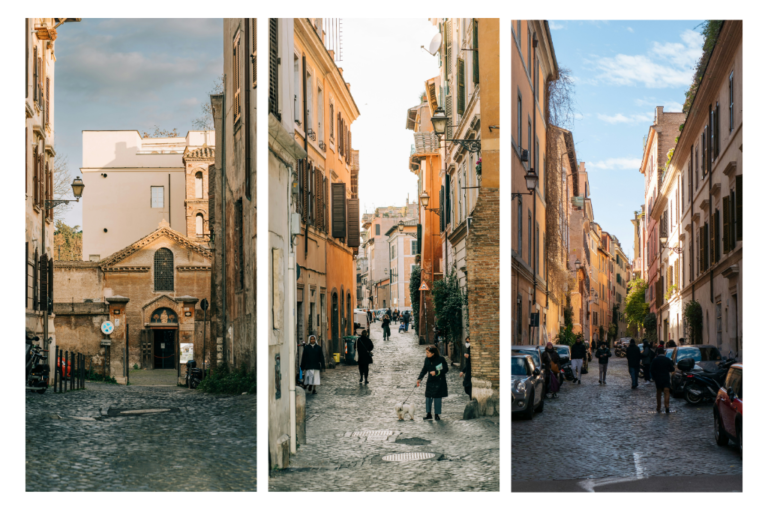
Moreover, the neighbourhood’s planning maintains an environment of a “city within a city”: Local markets, pharmacies, small supermarkets, and efficient public transport that connects both to the city centre and quieter residential areas. Its social cohesion is another key factor: The neighbours maintain an active community life with fairs, events, and local celebrations that make it much easier for a foreigner to integrate.
Trastevere isn’t only the most picturesque; it’s also the neighbourhood with the best balance between infrastructure, essential services, and the international community, making it the most solid answer to the question of which is the best neighbourhood to live in Rome.
Frequently Asked Questions about the best neighbourhoods in Rome
If it’s your first experience in Rome, Trastevere is ideal. It combines an international atmosphere with basic services, public transport, and a very active cultural life, making it easy to adapt quickly.
Neighbourhoods like Pigneto, San Lorenzo, and Tiburtina stand out for having more affordable rents, coworking spaces, cafés with WiFi, and young communities, making them comfortable places to work remotely.
Monteverde, Parioli, and Balduina are perfect options if you’re looking for peace, green spaces, and a more family-oriented environment, away from the tourist noise of the city centre.
Yes, areas like San Lorenzo and Piazza Bologna concentrate shared accommodation, student residences, and more affordable prices, in addition to being close to universities like La Sapienza.
In general, Prati and Parioli are considered very safe due to their residential atmosphere, low traffic density, and good service infrastructure.





 Language
Language 


















 No results found
No results found


